Are you stuck in a sanding dilemma? Confused as to which sander is better for your project: a sheet sander or an orbital sander? Which one will be more effective and efficient in getting the job done right? To help answer all of your questions, we’ve put together an epic guide comparing sheet sanders and orbital sanders. So, if you’re struggling with choosing which one is the right one for you – no worries! Read on to get the full scoop on this invaluable information so that your sanding dilemma can disappear.
What are Orbital Sanders
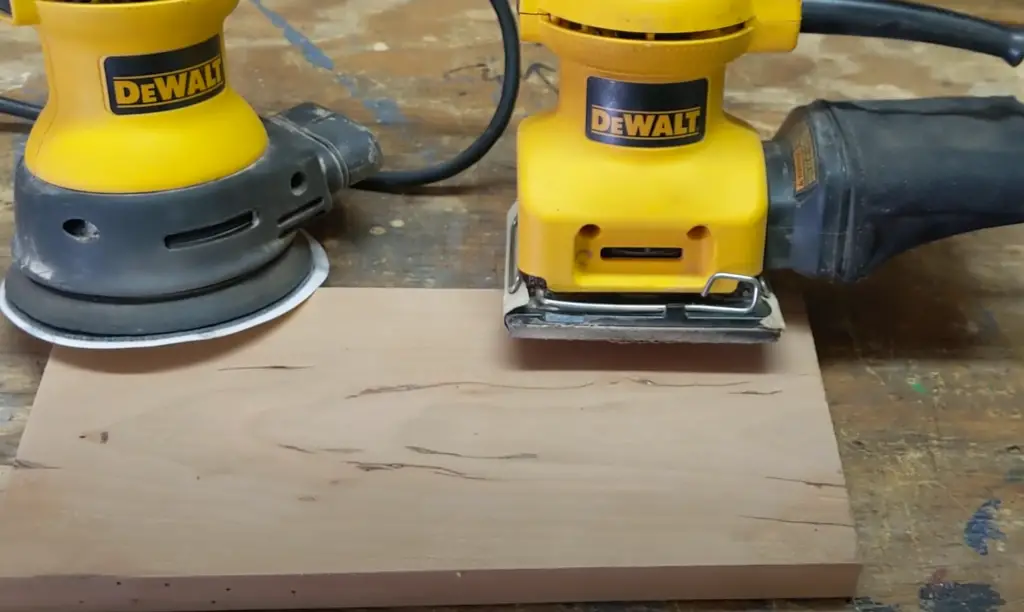
The most common type of orbital sander is the random-orbit sander which utilizes two separate disks that rotate in opposite directions at different speeds while also orbiting around one another. This produces very fine results with minimal swirl marks compared to traditional rotary or belt sanders. Orbital sanders also come in many sizes ranging from large commercial-grade machines to smaller palm-held models designed for home use.
Orbital sanders are used in a variety of applications such as woodworking, automotive detailing, and metalworking. They can be used to prepare surfaces prior to painting or staining, as well as creating a smooth finish on furniture and cabinets. Orbital sanders are also ideal for removing rust from metals or stripping away old paint and varnish. With the right attachment, they can even be used to remove mastic or thinset from floors.
In addition to their versatility, orbital sanders offer many safety benefits over other types of power tools including reduced vibration and lower noise levels. All this makes them a great choice if you’re looking for an efficient, powerful, and safe way to sand any surface. [1], [2], [3]
Pros of Orbital Sander
Now that you know what an orbital sander is, let’s take a look at some of the benefits they offer. We will begin by discussing the pros of using an orbital sander.
Provide smooth finish
When it comes to sanders, many people overlook the importance of finish. A good finish is essential for a successful sanding job. Whether you are looking to smooth a rough surface or just want to prepare a project for painting, the rightander can make all the difference in the results you achieve.
The primary benefit of an orbital sander is that it can provide a smooth finish on any surface. Unlike traditional belt or rotary sanders, orbital sanders use two disks which rotate in opposite directions at different speeds while also orbiting around one another. This motion creates a very fine finish with minimal swirl marks and gives the surface an even, polished look.
Solid dust collection system
Dust collection systems have become increasingly important in the woodworking industry, especially when it comes to sanders. Sanders are used to create a smooth finish on wood surfaces. With a sander, sawdust and other particles are created which can be harmful if breathed in or if they come into contact with skin. This is why dust collection systems have become so important for sanders.
A good dust collection system will help keep airborne particles from being released into the air. This helps to reduce the amount of potentially hazardous dust that can be inhaled by workers and bystanders alike. It also reduces the buildup of dust in shop areas and improves overall safety conditions.
Orbital sanders are usually equipped with a powerful dust collection system. Some models even come with a self-cleaning filter that can automatically clean the filter and collect more dust than standard filters. This helps keep the air in your shop or workspace much cleaner and healthier.
Bigger motors
In addition to the dust collection system, many orbital sanders have larger motors than other types of sanders. This makes them ideal for heavier-duty applications like removing paint or rust from steel or mastic from a concrete floor. Bigger motors also mean faster sanding speeds so you can finish your project quickly and efficiently.
The variety of available models means that there’s an orbital sander for every job, no matter how big or small it is. Whether you need something for detailed work or heavy-duty jobs, there’s an orbital sander out there that will suit your needs perfectly.
Very easy to use
A sander is an essential tool for any woodworker. It helps you achieve a smooth and even finish on your projects, and can save you time and energy when sanding larger pieces of material. But perhaps the most important feature of any sander is its ease of use. If a sander isn’t easy to use, it won’t be as effective or efficient as one that is designed with convenience in mind.
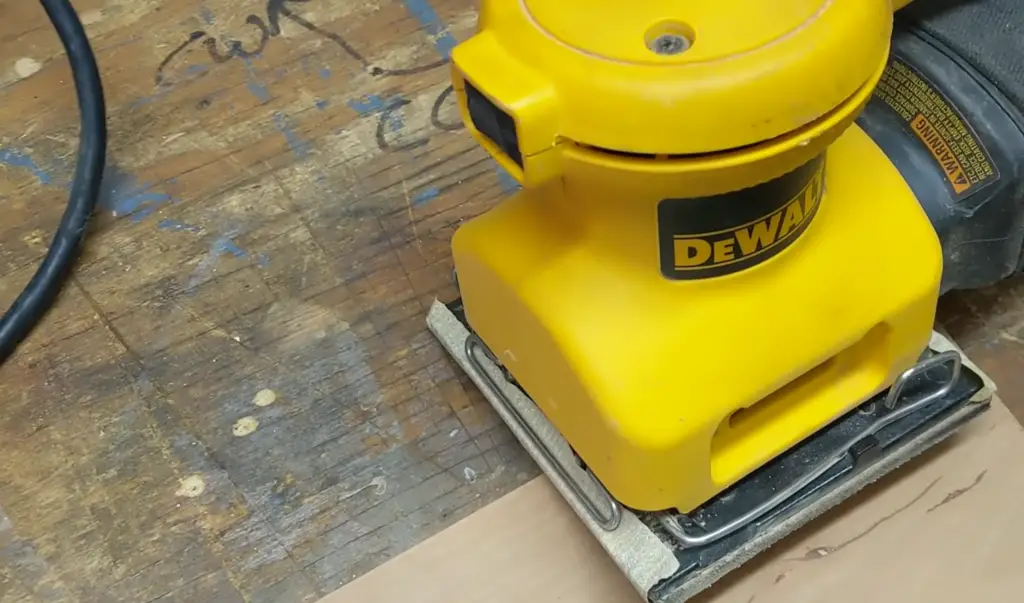
Luckily, orbital sanders are designed for ease of use. They’re lightweight and have a low profile, so they can be maneuvered easily around smaller work areas. The controls are usually straightforward and easy to understand, even for novice users. Plus, you don’t need any special training or experience to get started with an orbital sander – just read the instructions and you’ll be ready to go!
You will certainly forget about fatigue during sanding with an orbital sander. It is very comfortable to use and does not require too much physical effort, unlike belt or sheet sanders. [1], [2], [3]
Cons of Orbital Sander
Despite this, there are some drawbacks to using an orbital sander. It’s important to be aware of those potential issues so you can make an informed decision about which type of sander is best for your project. So now we shall discuss the disadvantages of orbital sanders.
More expensive
One of the biggest drawbacks to using an orbital sander is that they are generally more expensive than other types of sanders. This is because they require more advanced technology and features, such as a dust collection system. If you’re on a tight budget, then this may be an issue for you.
While price isn’t a dealbreaker for anyone, it’s still important to keep in mind when making a purchase. With that said, it’s important to understand that you’ll be getting a much more reliable and powerful sander when you opt for an orbital one, so the extra cost might ultimately be worth it.
Can’t sand between coats
One of the biggest disadvantages of orbital sanders is that they’re not suitable for sanding between coats of finish. This means that if you’re refinishing a piece, it may be better to use a different type of sander such as a belt or sheet sander.
Orbital sanders are designed to be used on the surface only and won’t remove material below the surface like some other types of sanders can. So if you’re looking to do more detailed work like removing old paint or stain, or leveling out an uneven surface, then an orbital sander probably isn’t your best option.
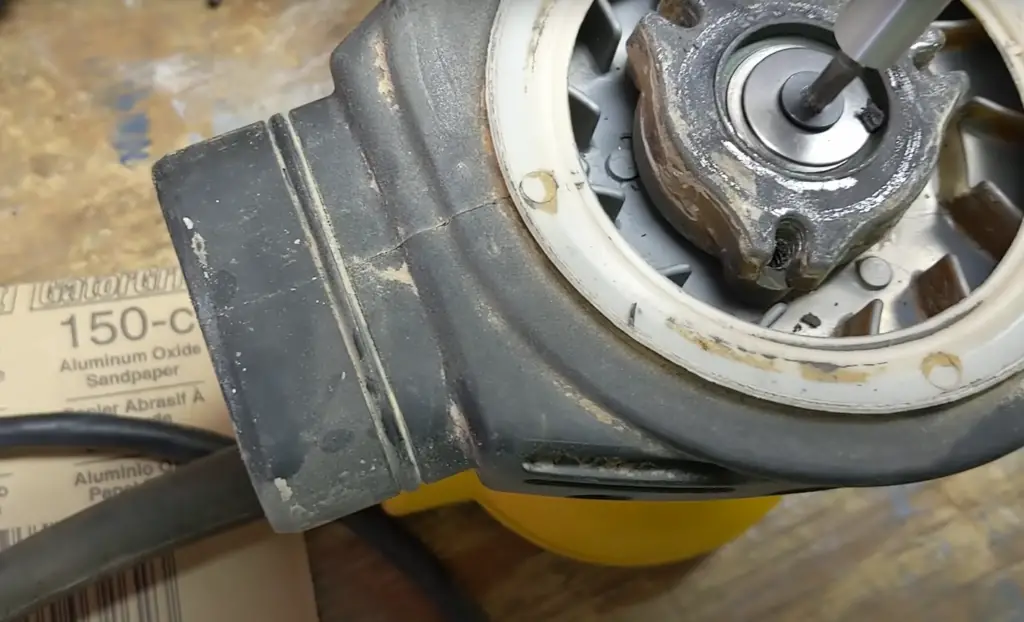
May be too powerful for more delicate pieces
One potential issue with orbital sanders is that they can be too powerful for more delicate projects, such as furniture or cabinetry.
And even with adjustable speed, it’s hard to guess whether your sander is too powerful for the piece you’re working on. That’s why it often makes sense to use a sheet or belt sander instead, as they can provide more control and a finer finish.
Sanding part can easily be damaged
Another drawback of an orbital sander is that it can easily damage the surface you are sanding if used incorrectly. This is because the motion of the sandpaper can cause it to dig into the material, leaving deep scratches or gouges in the surface. In order to avoid this issue, it’s important to maintain a consistent speed and angle when using your orbital sander.
Hard to work with at corners or in tight spaces
The last disadvantage of orbital sanders is that they can be difficult to maneuver in tight spaces or around corners. Circular pads and orbital movements make it hard to get into tight crevices or to sand straight lines. This means that an orbital sander won’t be very efficient when it comes to doing detailed work like sanding staircases, intricate trim pieces, or other small projects. You may need to use a finishing sander or hand sandpaper for these types of tasks. [1], [2], [3]
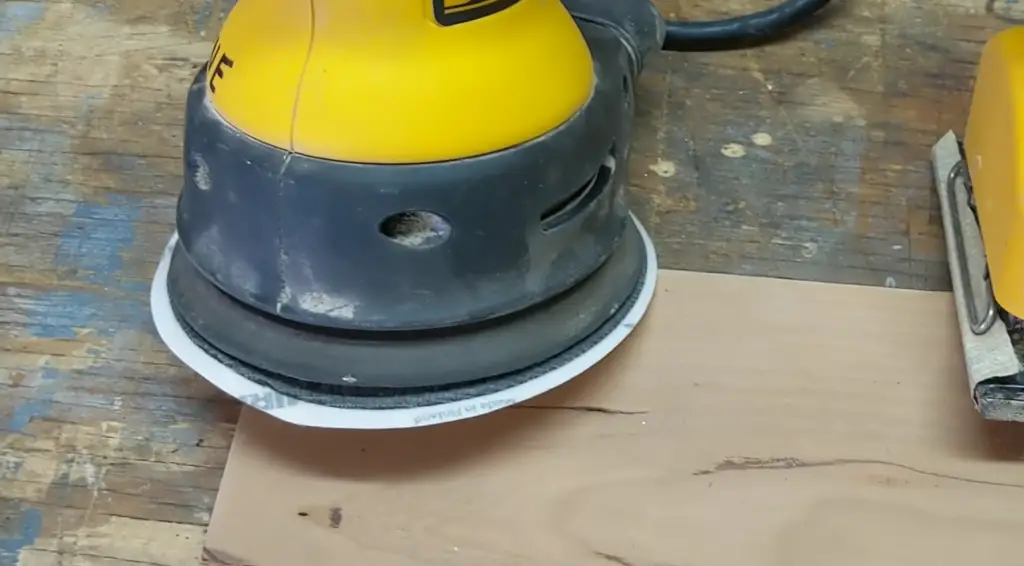
What are Sheet Sanders
Sheet sanders are specialized power tools that are designed to quickly and efficiently sand down various materials and surfaces. They are most commonly used for finishing flat surfaces, such as furniture, cabinets, and doors. Sheet sanders consist of an electric motor that is attached to a rotating abrasive wheel or belt. The wheel or belt can spin at different speeds depending on the material being worked on and the desired result.
The size of the sheet sander can vary from small handheld models up to large industrial machines. Smaller models often come with a variety of attachments and accessories, allowing them to be used for different applications such as detail work or precision sanding. Larger machines usually feature more powerful motors, larger abrasive discs, and wider working surfaces.
When using a sheet sander, it is important to take safety precautions such as wearing protective gear and ensuring that the work area is clear of any debris or hazards. Additionally, dust masks should be worn to prevent inhalation of wood dust particles. Sheet sanders can also create a lot of noise when in operation, so hearing protection might be necessary if the machine will be used for an extended period of time.
With proper care and maintenance, sheet sanders can provide years of reliable service. Regular tune-ups are important for keeping them running smoothly and efficiently. Additionally, replacing accessories such as belts or discs periodically helps keep the machine in top condition. With a quality sheet sander and some practice, anyone can achieve professional results on their projects. [1], [2], [3]
Pros of Sheet Sander
Now we will discuss the pros of a sheet sander. It doesn’t fall behind in any of the usual sander categories, and it stands up as an all-round tool for sanding projects.
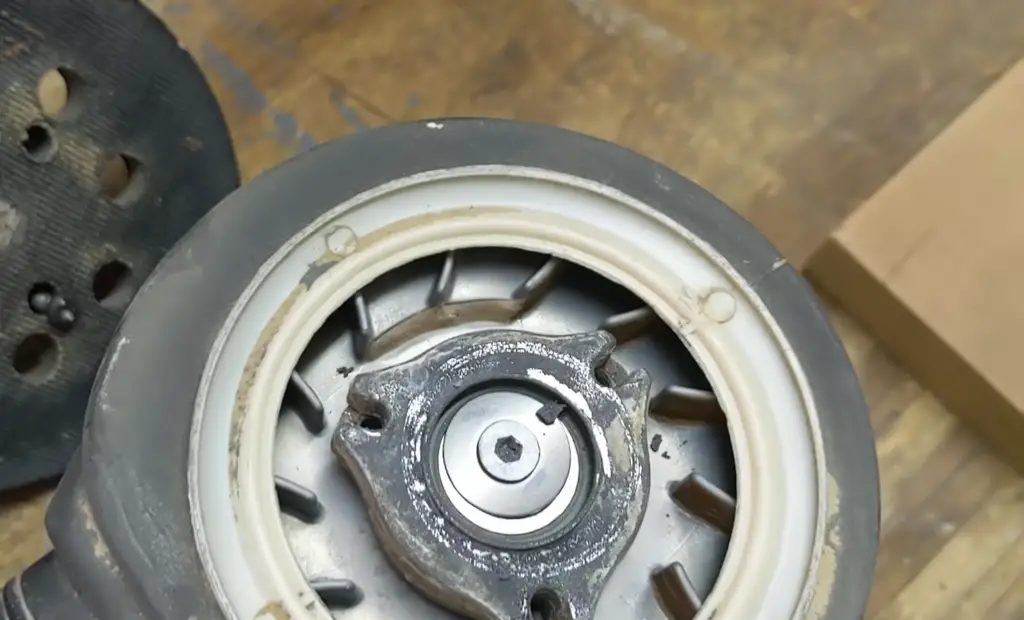
Affordable
The most obvious advantage of a sheet sander is the price. Sheet sanders are generally much cheaper than other types of power sanders, such as orbital sanders and random orbit sanders. This makes them very appealing to hobbyists who need an inexpensive tool that can still get the job done.
While price isn’t the biggest of factors when choosing a sander, it can be an important consideration for those on a tight budget. Sheet sanders offer good value for money and are a great option for anyone looking to save some cash.
Great to work with at corners
Not all sanders can easily get into tight corners, but sheet sanders are perfect for that. Sheet sanders come with a variety of attachments, such as small discs and corner blocks, to make it easy to reach those hard-to-reach areas. This makes them ideal for detailed work on furniture or other delicate pieces where precision is important.
Easy to use
We already discussed the importance of usability when it comes to power tools, and sheet sanders take that concept a step further. They are designed for speed, accuracy and versatility in mind, making them increasingly popular among woodworkers and craftsmen alike.
The ergonomics of the tool allow for comfortable operation with minimal strain on wrists or arms, allowing you to work for long periods without feeling fatigued. Additionally, most models come with an adjustable handle that allows you to find the perfect working angle for your project.
Great for finishing
When using a sander, you expect it to produce a smooth finish, and sheet sanders excel in this area. They can quickly and easily remove any imperfections in the surface, allowing for a smooth and uniform finish. This is especially useful when working on large surfaces such as doors or furniture pieces.
Sheet sanders have the low risk of potential imperfections when compared using hand sanding techniques. Additionally, the speed at which sheet sanders can finish a project makes them well suited for quick jobs or tight deadlines.
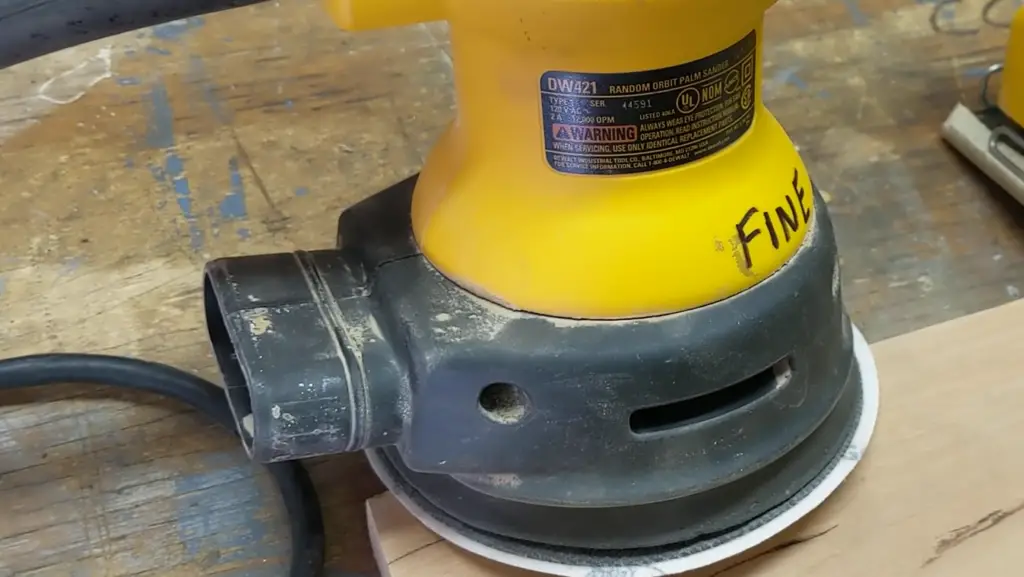
Variety of models
Finally, there is a wide range of models available on the market. Sheet sanders come in various sizes and power levels, allowing you to find the perfect tool for your projects. This makes them a great option for beginners who are just getting started with woodworking, as well as experienced craftsmen looking for an upgrade to their existing tools.
No matter what type of job you need to do, there is likely a sheet sander that can handle it. They are extremely versatile tools that can make any sanding project easier and faster than ever before. [1], [2], [3]
Cons of Sheet Sander
Despite all those benefits, sheet sanders do have some drawbacks. It’s important to be aware of these before you purchase one.
Lack of power
Unfortunately, sheet sanders lack the power that other types of sanders have. This can be an issue when tackling larger projects or tougher materials such as hardwoods. Sheet sanders are best suited for smaller jobs, and they may struggle with anything too large or difficult.
This is probably the main reason why sheet sanders are so much cheaper than other types of power sanders. If you need something with more power, then an orbital sander may be a better option for you.
Not suitable for multilayer sanding
Another downside of sheet sanders is that they are not suitable for multilayer sanding. If you need to remove multiple layers of material, then a belt sander or an orbital sander would be a better choice. Sheet sanders do offer some degree of control and precision when it comes to removing small amounts of material, but they are not designed for larger projects.
Might leave swirl marks
One of the worst things that can happen when using a sheet sander is that it might leave swirl marks on the surface. This is especially true for projects with softer woods, such as pine or cedar. You can prevent this by making sure to use the proper grit size of sandpaper and to keep your movements steady and even. [1], [2], [3]
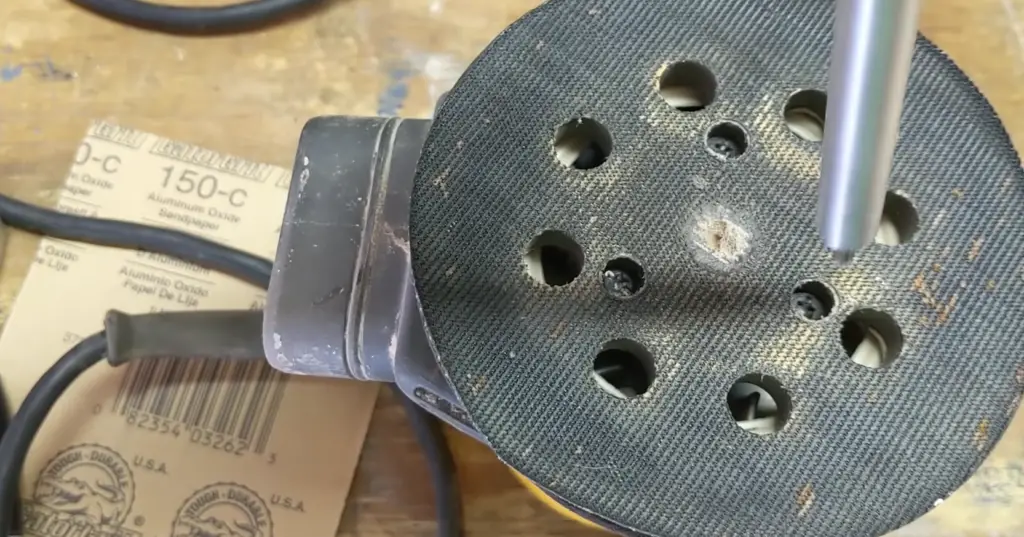
FAQ
Which sander is most versatile?
Random orbital sander (also known as an orbital sander) is the most versatile of the two sanders. It has a round pad that rotates in a random pattern, which helps to reduce streaks and creates a smoother, more consistent finish. This type of sander can be used for a variety of applications like sanding furniture or removing paint from surfaces. The random orbit also minimizes gouging on softwoods like pine and cedar, making it ideal for fine finishing work.
On the other hand, sheet sanders are best used on flat surfaces with straight edges where precision is required. They have square-shaped pads that move in an up-and-down motion to remove material quickly and evenly – perfect for large surfaces such as floors and decks. They don’t do well on curved surfaces and require more time and effort to achieve the desired finish when dealing with detailed projects.
Which type of sander is best?
That depends on a variety of factors, including the type of project you’re working on and your budget. Generally speaking, random orbital sanders are considered to be one of the best types due to their versatility and efficiency. They offer more control than traditional belt or palm sanders, as well as less dust creation. Random orbital sanders work much faster than other types and can be used for a wide range of applications, from finishing wood to polishing metals. If you have a larger project that requires extensive sanding, a drum sander is likely your best option. These powerful machines can quickly remove large amounts of material without leaving any swirl marks behind. However they tend to be considerably more expensive than other types of sanders, so consider carefully before investing in one.
What is the advantage of using a square sheet palm sander compared to an orbital sander?
A sheet palm sander is an ideal tool for sanding large flat surfaces efficiently. It uses a square-shaped abrasive pad that moves rapidly in small circles to evenly sand large areas quickly. This makes it ideal for finishing flat surfaces like tabletops, cabinet doors and floors. Sheet palm sanders also feature a long handle which gives the user more control over the surface being sanded and makes them easier to use compared to orbital sanders.
The main advantage of using a sheet palm sander is its ability to work with finer grits than orbital sanders can manage. This means that it produces smoother finishes on softer woods or metal objects. The rapid oscillating movement helps ensure an even finish while creating less dust than other types of sanders.
Sheet palm sanders also have a less aggressive cutting action than orbital sanders, which makes them safer to use on delicate pieces and surfaces that could be easily damaged. This is especially important when working with antiques or other cherished items.
Overall, sheet palm sanders are more effective for larger flat surfaces and provide a smoother finish than orbital sanders can manage. They are also easier to control and produce less dust, making them ideal for applications such as woodworking or metalworking projects around the home.
What is the difference between a sheet sander and orbital sander sander?
The main difference between a sheet sander and orbital sander is power. Orbital sander is much more powerful and is suitable for heavier duty jobs. Sheet sanders are often used on softer woods like pine or balsa, as well as other materials such as metal or plastic that require a finer finish.
Sheet palm sanders also have a square abrasive pad that moves rapidly in small circles to evenly sand large areas quickly. This makes it ideal for finishing flat surfaces like tabletops, cabinet doors and floors. Orbital sanders have a round abrasive pad that oscillates at higher speeds than sheet sanders and is typically used for more powerful applications such as removing paint or rust from hard surfaces.
Useful Video: Random Orbital Sander vs. Sheet Sander – Which is Right For Your Job?
Conclusion
Sanders makes quick work of sanding jobs, but whether you choose a sheet sander or an orbital sander for your project can be confusing. Sheet sanders are best for light jobs involving small spaces, while orbital sanders are better suited for larger projects and harder woods. Orbital sanders also have the benefit of offering more control and less dust than a sheet sander.
Although both types of sanders can be used on wood and metal surfaces, it is important to consider the size, shape and material being worked on when choosing which one is right for the job at hand. For example, if you’re working in tight areas with softer wood surfaces then a sheet sander would likely be best; however, if you’re working on hardwood surfaces and larger areas then an orbital sander would be more suitable. Ultimately, the decision comes down to your preferences and the job you need to complete.
No matter which type of sander you choose, it is important to wear protective clothing such as a mask and gloves when operating any type of power tool. Always follow safety instructions and use caution when using either a sheet or orbital sander. With knowledge of uses and benefits, hopefully this article has made it easier for you to decide between a sheet sander versus an orbital sander for your project. Happy sanding!
References
- https://www.woodworking-news.com/woodworking-projects-tips/random-orbital-sander-vs-sheet-sander/
- https://www.electronicshub.org/sheet-sander-vs-orbital-sander/
- https://bestorbitalsander.com/orbital-sanders-vs-sheet-sanders-whats-the-difference/






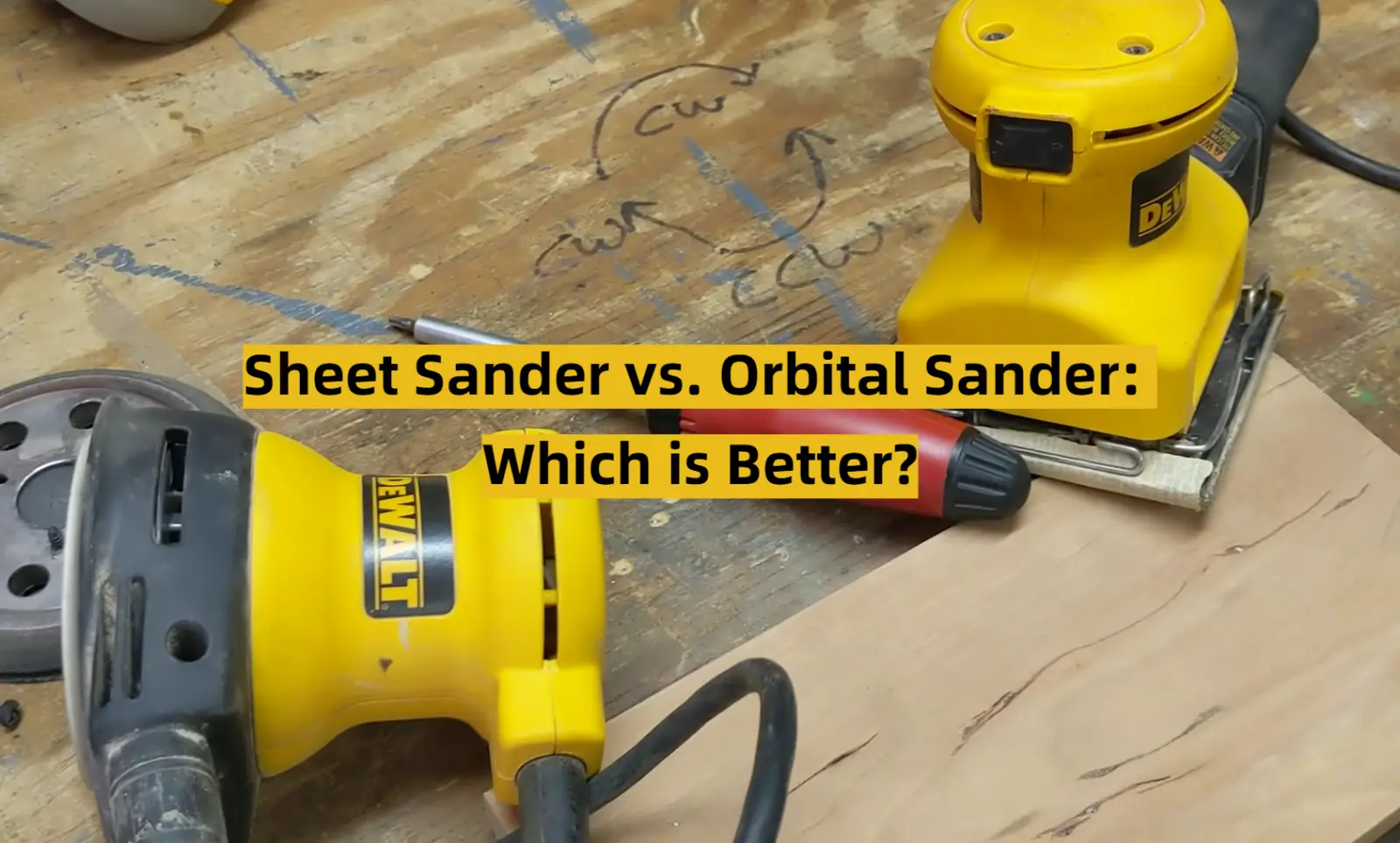





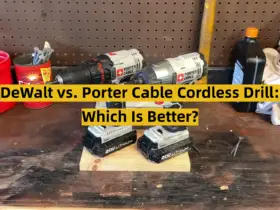
Leave a Reply